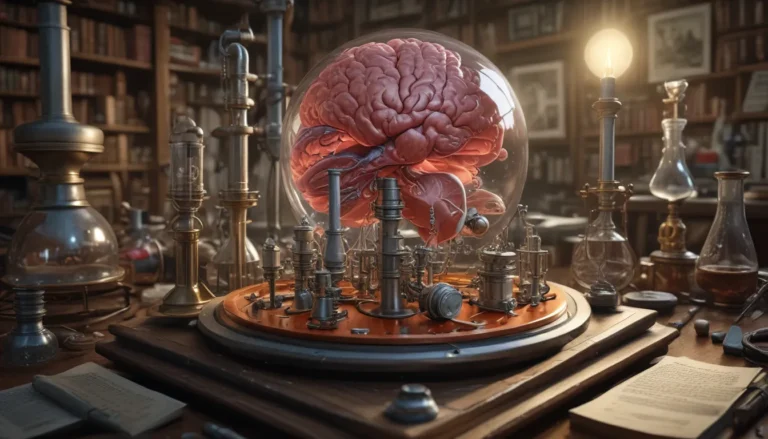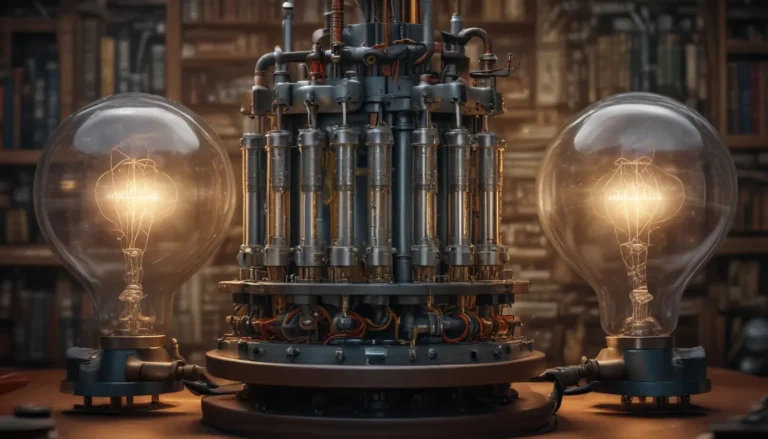A Note About Images: The images used in our articles are for illustration purposes only and may not exactly match the content. They are meant to engage readers, but the text should be relied upon for accurate information.
Welcome to the captivating world of atomic structure, where the tiny particles that make up matter defy our traditional understanding of the physical universe. From the mysterious behavior of electrons to the complex organization of subatomic particles, the study of atomic structure reveals a world of endless possibilities and mind-boggling discoveries.
The Dual Nature of Particles
At the heart of atomic structure lies the enigmatic dual nature of particles. In the realm of quantum mechanics, particles such as electrons and photons exhibit both wave-like and particle-like behavior, challenging our perception of the fundamental building blocks of matter. This duality, described by mathematical wave functions, adds a layer of complexity to the behavior of particles in the microscopic world.
Exploring the Uncertainty Principle
According to Werner Heisenberg’s Uncertainty Principle, we encounter a fundamental limitation in our ability to simultaneously know the exact position and momentum of a particle. This principle introduces an element of unpredictability into the study of atomic structure, highlighting the mysterious and unpredictable nature of particles at the quantum level.
The Quantum Mechanical Model Unveiled
Revolutionizing our understanding of atomic structure, the quantum mechanical model introduces a new way of conceptualizing the arrangement of electrons within an atom. Unlike the classical model, which depicts electrons orbiting the nucleus in fixed paths, the quantum mechanical model presents electrons as existing in probability clouds or orbitals, where their precise location remains uncertain.
Demystifying Quantum Numbers
Quantum numbers serve as essential descriptors of electron properties within atomic structure. These numbers specify the energy level, shape, orientation of an orbital, as well as the spin of an electron, providing a systematic framework for characterizing the complex organization of subatomic particles within an atom.
Unraveling the Electron Cloud Model
The electron cloud model offers a unique perspective on the distribution of electrons within an atom. By depicting the probability distribution of electrons in different regions of space surrounding the nucleus, this model emphasizes the fuzzy and uncertain nature of atomic structure, shedding light on the elusive behavior of electrons in the microscopic world.
Navigating the Shell Model
Organizing electrons into distinct energy levels or shells, the shell model of atomic structure provides insights into the hierarchical arrangement of electrons within an atom. Each shell can accommodate a specific number of electrons, with the outermost shell containing valence electrons that play a crucial role in determining the chemical properties and reactivity of an element.
Diving into Valence Electrons and Orbitals
Valence electrons, located in the outermost shell of an atom, influence the chemical behavior and reactivity of elements through their involvement in chemical bonding. Orbitals, regions where electrons are likely to be found, come in various types with different shapes and orientations, offering a glimpse into the intricate distribution of electrons within atomic structure.
Understanding the Exclusion Principle
Proposed by Wolfgang Pauli, the Exclusion Principle dictates that no two electrons in an atom can share the same set of quantum numbers, ensuring the stability of atoms by enforcing distinct energy levels and orbitals for each electron. This principle plays a vital role in shaping the structure of atoms and determining their properties.
Insights into Neutrons and the Strong Nuclear Force
Neutrons, along with protons, form the nucleus of an atom, contributing to its stability and isotope configuration. The strong nuclear force, which binds protons and neutrons together, overcomes the repulsive electrostatic forces between positively charged protons, ensuring the integrity of atomic structure and the stability of the nucleus.
Illuminating the Role of Energy Levels
Energy levels, represented by shells in atomic structure, correspond to specific states that electrons can occupy within an atom. The energy difference between these levels results in the absorption or emission of photons, leading to phenomena such as spectral lines and the vibrant colors observed in fireworks, showcasing the dynamic nature of atomic interactions.
Embarking on a Quantum Leap
In the realm of atomic physics, the quantum leap describes the abrupt transition of an electron between different energy levels or orbits. This leap occurs when an electron absorbs or emits a photon, releasing or absorbing energy in discrete quanta, illustrating the quantized nature of energy levels within atomic structure.
Conclusion
The exploration of atomic structure unveils a world filled with intricate patterns, enigmatic behaviors, and endless possibilities. As we continue to unravel the mysteries of the microscopic realm, new discoveries await, challenging our perspectives and pushing the boundaries of scientific understanding. From the groundbreaking experiments of notable scientists to the complexities of atomic orbitals and the duality of particles, the study of atomic structure remains a captivating journey of discovery and innovation.
As we delve deeper into the mysteries of atomic structure, we invite you to join us on this quest for knowledge and exploration. Together, we can unlock the secrets of the microscopic world and pave the way for future advancements and innovations in the field of physics. Explore the intricate world of atomic structure and uncover the mesmerizing facts that await you in this fascinating realm of science and discovery.
FAQs
- Q: What is atomic structure?
-
A: Atomic structure refers to the organization of particles within an atom, including protons, neutrons, and electrons.
-
Q: Who discovered atomic structure?
-
A: Scientists such as Rutherford, Bohr, and Schrödinger contributed to our understanding of atomic structure.
-
Q: Why is atomic structure important?
-
A: Understanding atomic structure enables us to predict chemical reactions, design new materials, and comprehend the behavior of matter.
-
Q: What are subatomic particles?
-
A: Subatomic particles are smaller particles that make up atoms, including electrons, protons, and neutrons.
-
Q: How are atomic structures represented?
- A: Atomic structures are often depicted using models like the Bohr model, showing electrons in specific energy levels around the nucleus.
Join us as we explore the fascinating world of atomic structure, uncovering its mysteries and embracing the wonders that await in this captivating realm of science and discovery.






